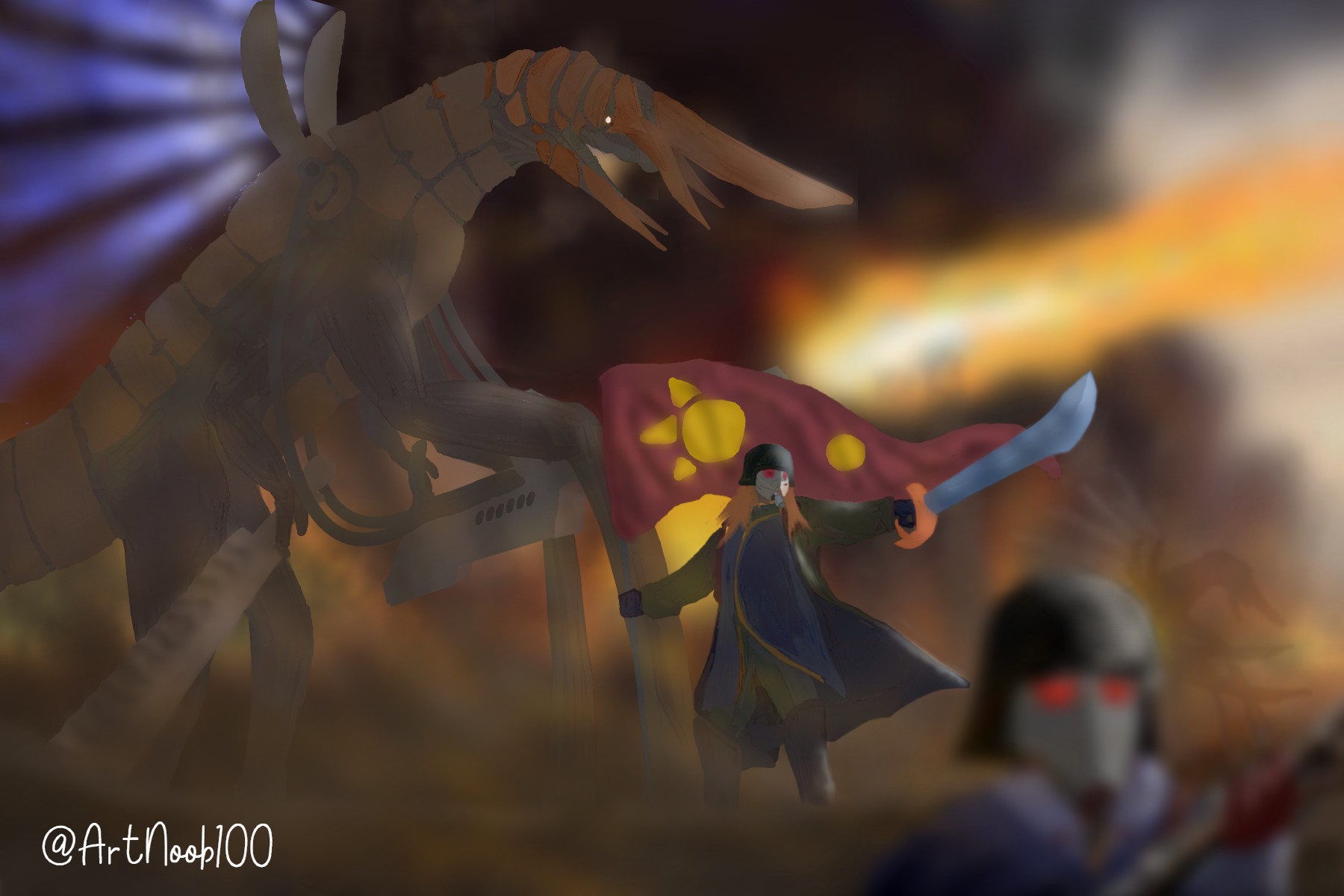
Titanic in proportion and armed with keen intelligence, if you ever come across an Armagator, better pray it doesn’t consider you an enemy. While found scattered throughout the Ark, sighting one remains rare. This is because they usually reside in places considered extremely inhospitable to most other organics. Armagators are considered a form of hyperthermophiles, being adapted to living in extremely high-temperature environments.
While thermophilic lifeforms aren’t rare in the galaxy, most tend to be microbial. It is, therefore, in the context of their extreme size, Armagators are considered distinct in this category.
To thrive in extreme heat, Armagators have developed specialized proteins that can withstand temperatures of up to 1500 degrees Celsius (2700 degrees Fahrenheit). These proteins prevent denaturation, allowing the creature to maintain its biological functions even in the searing heat of molten lava. They serve not only as structural support but also as powerful catalysts in the digestion of volcanic minerals.
To prevent overheating, a complex network of blood vessels runs through the creature’s body, tasked with drawing heat away from its internal organs. The creature’s plasma is known to possess coolant-like properties which aids in heat dissipation. The absorbed heat is released in controlled bursts through vents on the creature’s back, creating a breathtaking display of flaming ‘wings.’
Armagators tend to be long-lived and grow throughout their lifetime. However, males tend to have much lower life expectancies due to their more aggressive nature, especially during the mating season. They are documented to mate for lives, although, in situations where females greatly outnumber males, instances of polygamy have been observed.
Diet
Like the yet even larger Drakons, Armagators are lithovores. Their guts are home to various thermophilic microorganisms. These microbes help in breaking down the volcanic minerals, aiding in digestion, and providing additional nutrients for the titan.
While having many similar adaptations, it must be noted that Drakons and Armagators are not related. Rather, their similarity is a product of convergent evolution.
Culture and Society
Unsurprisingly, in many primitive cultures, the Armagators are revered as deities and worshiped. Some may even perform sacrifices to appease these giants, even those Aramgators don’t actually eat meat. If they do get attracted to a supposed sacrifice, it is more out of curiosity at this screaming tied-up victim. Unfortunately, for the said victim, their life is always cut short when an Aramgator comes closer to inspect; its heat cooking the exposed individual alive.
Those in a more advanced stage of society have, however, been observed to try and harness the beast’s raw power for military purposes. Of course, in most cases, this ends disastrously, as the species, while intelligent, is also highly aggressive, thus unfit for domestication.
Of the cases documented where Armagators were successfully ‘domesticated’ or at least learned not to harm their supposed allies, there appears to exist a common theme. In essence, it is the rather Armagators that domesticated the other species, molding its civilization towards their own benefit. This arrangement works well and can be enduring. The two species don’t compete for the same food source and in exchange for added protection, the Armagotors in return have the other species look after its welfare.
Armagators are also attracted to the ‘shinies’ the other sophont species may produce, preferably those that don’t melt or rust in their presence. It is said that if you gift an Armagator enough shinies, it would pledge to protect you and your kins for life. This, given the titan’s long lifespan, effectively guarantees its protection to your linage for several generations. In a polity, noble houses each might have their own Armagator guardian made distinct with the house’s heraldry and insignia decorated on its armor. A case example is the human faction, Imperial Eisenkreig.
This entry was made by Artnoob100.